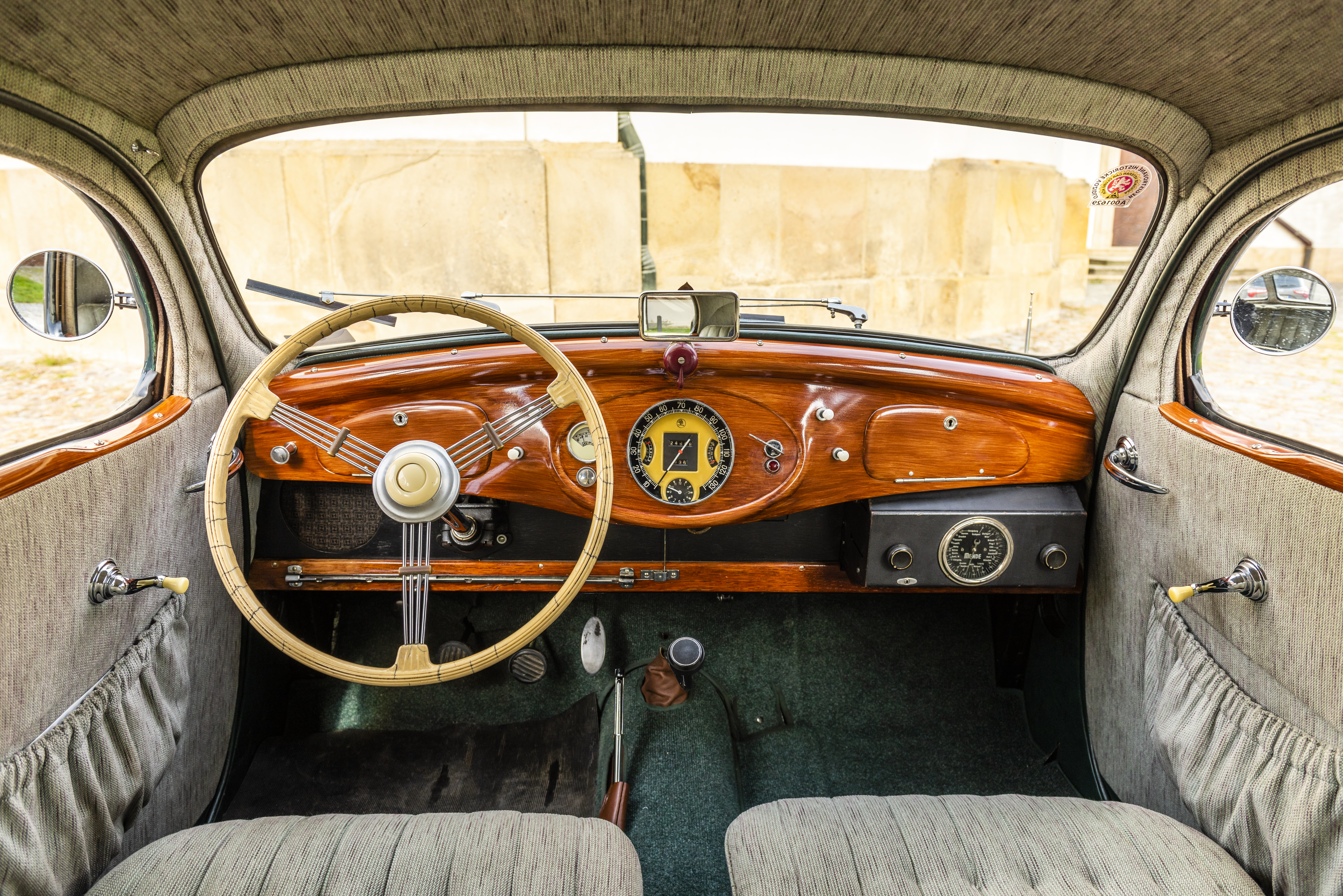Parts cast on the cooking stove
Not long after he bought the car, it ended up in a ditch when he was parking, and the entire front was dented. But the enthusiastic young owner wasn’t going to let some dented metal worry him unduly. He knew the car needed repairs anyway and estimated that the work would take him five summer holidays. Quite a few parts could be found in breakers’ yards and, as a trained fitter, he was confident he could make the rest. The deeper he immersed himself in renovating the car, the more parts he wanted to have in perfect condition. In the end, his work on the car lasted thirty years.
 Miroslav Strouhal gave the car a complete overhaul, from the engine and the axles to the body.
Miroslav Strouhal gave the car a complete overhaul, from the engine and the axles to the body.
A romantic story turned into a saga of incredible dedication and ambition as well as resourcefulness and boundless energy. “I completely overhauled it, from the engine to the axles and the body. I kept anything that could be salvaged, but I also made new sills, timbering and sheet-metal parts. I even made new pinion bushings and cast my own steering mechanism. It didn’t come out right the first time and I had to cast some of the parts on the cooker at home. Once it splashed into the soup cooking on the next hob,” he recalls with a laugh.
Mrs Strouhalová did her bit as well. “She helped me any way she could, and today she goes to classic car events with me. She looks after our clothes to make sure they match the period. Once we even won a prize for the most stylish outfits.”
But Mr Strouhal also turned his hand to more complex operations. The previous owner had installed a four-speed gearbox to make the car quieter, but today the car again has the original three-speed transmission. It even boasts original details like the adjustable rear-window blind and the cord-operated shutter in front of the radiator to warm up the engine faster in winter.
 The cord-operated shutter in front of the radiator to help the car engine warm up faster in winter
The cord-operated shutter in front of the radiator to help the car engine warm up faster in winter
There are only a few non-original parts on the car: for example, the easily removable indicator lights are from the period but not original. When it was made, the car only had small direction signal arms that are easy to miss in today’s busy traffic.
“As I use this car for day-to-day driving, I also installed daytime lights that are inconspicuously positioned beneath the main headlights. And if I ever need to reverse at night, I can take a magnetic reflector out of the boot and attach it to the bumper,” he says, mentioning some essential features for today’s roads.
 The dashboard, including the Mende valve car radio.
The dashboard, including the Mende valve car radio.
He can even listen to music while he drives. The first owner fitted the RAPID with a valve car radio made by the firm of Mende, which was the height of luxury at the time. It still works, and in the perfectly renovated interior the music from medium-wave radio stations sounds like a crackling gramophone record in a black-and-white film.

